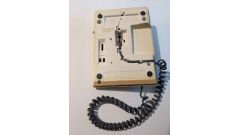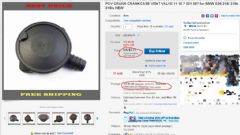What to do with an old laptop
by johna | August 19, 2022 | Computers & Internet Retro Computing
I have an old notebook that is incapable of running a current version of Windows at an acceptable speed.
It's from 2013, so just under ten years old, and it is "powered" by an Intel Celeron 1.8GHz processor with 2Gb of memory.
It came with Windows 8, but it was painfully slow to use, partly due to the bloat that comes with the OEM (Compaq) installation.
I didn't even bother trying Windows 7 or 10 on it.
So what to do with this notebook?
My first plan was to try and do some retro computing by installing something like DOS 6.22 or Windows 95 or 98. But it seems that this computer is too new for such old operating systems.
So I installed the modern equivalent, FreeDOS, which was easy to download and install and worked well to run some old applications, although dBase IV needed some tweaks to get running properly.
But that got tiring quickly, so how about Linux? I searched for lightweight distributions and opted to try Xubuntu first. The installation process was kind of painful and slow. And, worst of all, at the end of it, the notebook failed to boot from the hard drive.
I decided to leave Linux there for now and move on to something else.
Was it possible to turn my notebook into a "Chromebook"? After a little searching I found Chrome OS Flex and I went ahead and downloaded and installed it according to Google's instructions, which went well.
The operating system is reasonably quick to load and is responsive to use. However, I did find that it was a little slow to load and browse web pages, although acceptable.
And despite mention of unobtrusive updates it wanted to restart and update twice once I started using it.
Chrome OS Flex wasn't quite the solution to an OS for an old computer that I was hoping for, but it is certainly worth a try.
So back to Linux. What about Linux Lite?
The installation went well but the first boot took a long time and seemed to be stuck on something network related. It eventually timed-out after more than five minutes and started up.
However, it was also slow and when Chrome finally loaded it couldn't access the network despite successfully connecting to the local wireless network during the installation process.
I don't have much patience so I gave up on Linux altogether at this point.
I thought I might install Windows XP so I could use the computer with some old car diagnostics software I had, but XP crashed while only starting the installation process, so I gave up on that too.
So this is where the story ends. I have reinstalled Chrome OS Flex as that, unfortunately, seems to be the best option. At least it is usable for web browsing, YouTube and other web-related tasks.
It's from 2013, so just under ten years old, and it is "powered" by an Intel Celeron 1.8GHz processor with 2Gb of memory.
It came with Windows 8, but it was painfully slow to use, partly due to the bloat that comes with the OEM (Compaq) installation.
I didn't even bother trying Windows 7 or 10 on it.
So what to do with this notebook?
My first plan was to try and do some retro computing by installing something like DOS 6.22 or Windows 95 or 98. But it seems that this computer is too new for such old operating systems.
So I installed the modern equivalent, FreeDOS, which was easy to download and install and worked well to run some old applications, although dBase IV needed some tweaks to get running properly.
But that got tiring quickly, so how about Linux? I searched for lightweight distributions and opted to try Xubuntu first. The installation process was kind of painful and slow. And, worst of all, at the end of it, the notebook failed to boot from the hard drive.
I decided to leave Linux there for now and move on to something else.
Was it possible to turn my notebook into a "Chromebook"? After a little searching I found Chrome OS Flex and I went ahead and downloaded and installed it according to Google's instructions, which went well.
The operating system is reasonably quick to load and is responsive to use. However, I did find that it was a little slow to load and browse web pages, although acceptable.
And despite mention of unobtrusive updates it wanted to restart and update twice once I started using it.
Chrome OS Flex wasn't quite the solution to an OS for an old computer that I was hoping for, but it is certainly worth a try.
So back to Linux. What about Linux Lite?
The installation went well but the first boot took a long time and seemed to be stuck on something network related. It eventually timed-out after more than five minutes and started up.
However, it was also slow and when Chrome finally loaded it couldn't access the network despite successfully connecting to the local wireless network during the installation process.
I don't have much patience so I gave up on Linux altogether at this point.
I thought I might install Windows XP so I could use the computer with some old car diagnostics software I had, but XP crashed while only starting the installation process, so I gave up on that too.
So this is where the story ends. I have reinstalled Chrome OS Flex as that, unfortunately, seems to be the best option. At least it is usable for web browsing, YouTube and other web-related tasks.
Related Posts
The simplest and cheapest retrobright technique (but not the fastest)
by johna | October 30, 2024
Trying the simplest and cheapest method of retrobrighting - just using the sun!
Three tips to pay as little as possible when shopping on eBay Australia
by johna | October 29, 2024
There's plenty of cheap items on eBay Australia but sometimes you can pay even less with a little bit of work.
Some recent great stories from Retro Recipes
by johna | October 12, 2024
Retro Recipes recently had some amazing stories about the Commodore 64 that are well worth sharing.




Comments
There are no comments yet. Be the first to leave a comment!